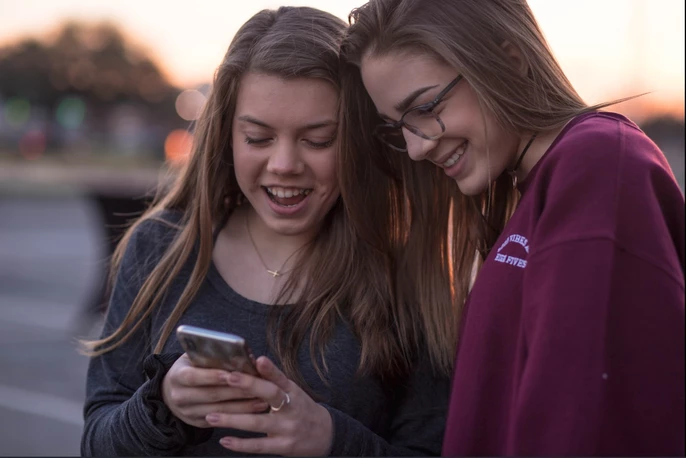
Gen Z vs. Millennials: Marketing Trends and Video Habits 2019
Gen Z Video Trends (and how you can use them to market to this mobile-first generation)
As a generation where only 45 percent watch cable TV on a television set (out of those who watch TV programming at all), mobile-streaming is the primary video channel for audiences under the age of 30. Common Sense Media found that teens average 9 hours of leisure entertainment media every day, and of that, 6.5 hours are forms of media that are consumed on a screen.
Gen Z and Personalized Video Content
Consumers have come to not just prefer, but expect customizable content. No longer confined by scheduled show times and choices, viewers can now personalize their video experience by searching for a specific song or a specific show episode. This demand is only expected to continue as technologies such as virtual reality is expected to grow.
Different than Millennials
Generation Z is different from its preceding generations, specifically Millennials, for two main reasons:
-
Gen Zers are the most ethnically and racially diverse with the largest non-white demographic in the US.
-
They have grown up in an increasingly interactive digital landscape, having never known a world without the internet.
For those reasons, today’s youth is exposed more than ever to a variety of backgrounds and perspectives. Consequently, this generation is the most socially-conscious, but with their expectation for personalization, this is only true when they initiate the conversation.
YouTube: 85% of Gen Z uses Youtube. It was found that today’s teens turn to this platform for three main reasons:
-
To learn something
-
To deepen real-life connections and bridge generations
-
As a stress reliever from the stressors of being a teenager.
With the focus being on preparing for the future and escaping the stresses of everyday life; brands should take note and appeal to both of these values when considering this platform for ad placement. Additionally, contrary to what many might think, Gen Z does not consider YouTube a solitary activity. While initially a solo act, many Gen Zers share and recommend content, even cross-generationally, within their circle.
Gen Z Goes out of its Way to Avoid Ads
Subscriptions (Netflix, Hulu, Amazon Prime, etc.): Disruptive advertising has a more negative impact on Gen Z compared to older generations, with many opting to use their disposable income to subscribe to streaming services. Gen Z’ers are the most likely to install ad-blocking programs onto their devices.
Social Media (Instagram, Snapchat, etc.): Social media users aren’t actively search for specific content, which makes them more susceptive to new ideas or content and perfect for ad placement. The rise of video “stories”, quick snapshots of a person’s life shared publicly on these platforms, has caused a rise in the passive social experience.
Live Broadcast: There is a clear dichotomy between who’s watching cable TV and who’s streaming online – 84% of US adults aged 65+ say cable or satellite is their primary way of watching television compared to only 31% of 18-29 year olds. Gen Zers want two-way engagement and television is a one-way street. Live broadcast viewership has been dwindling with the advent of streaming, but one particular genre of television has been holding strong with this generation: live sporting events, particularly football and basketball.
How Gen Z Consumes Videos
According to Deloitte Insights, there are five types of media users. The majority of Gen Z falls into two categories: mobile-first viewers and highly-subscribed.

As the name implies, Mobile-First Viewers initiate much of their viewing habits on their mobile devices. This persona does 30% of their movie and 25% of TV show streaming on their phones and they use social media the most out of all other users. In addition, they spend the most time overall on their mobile devices. They make up 18% of the market and 16% of all Gen Zer’s belong in this category.
The Highly Subscribed group is the most willing to pay for premium services when it comes to their media content. They do not forgo their TV subscriptions as many still watch live sports but they do want a reduction in ad duration. They comprise of 21% of the market with 16% of Gen Zers belonging to this group.
It’s important to note that Gen Zers pursue video-formatted content for its visual accessibility when comparing the platform’s search function to the likes of Google. Easily digestible, video content is king to this immediate-gratification driven generation.
So What Does This Mean for Marketers?
The format of ads continually change to match the the media landscape of the times and it’s evident in how advertising content is presented today. The insights above become clear when you recognize that:
-
It’s all about video SEO. Youth is prone to watching content that is on their recommended list of the platform’s algorithms
-
Ads poised as native post content on social media platforms perform better. The use of micro-influencers increases relatability with the audience and are perceived as less disruptive.
-
An agile video content creation strategy should be adopted to allow for personalized content that increases engagement and connectivity
-
Younger consumers expect to see the content they want to see, when they want to see it, and they expect it to be immediate and instant. Ads by their very nature interrupt this expectation, and advertisers need to factor the audience’s mindset into account when devising their creative approach, journey map, and media plan.
-
In this connected digital landscape, content can be easily shared with the swipe of a finger. Let your audience do the work for you! By creating relatable and easily digestible content, your viewers will share your message for you, even cross-generationally.